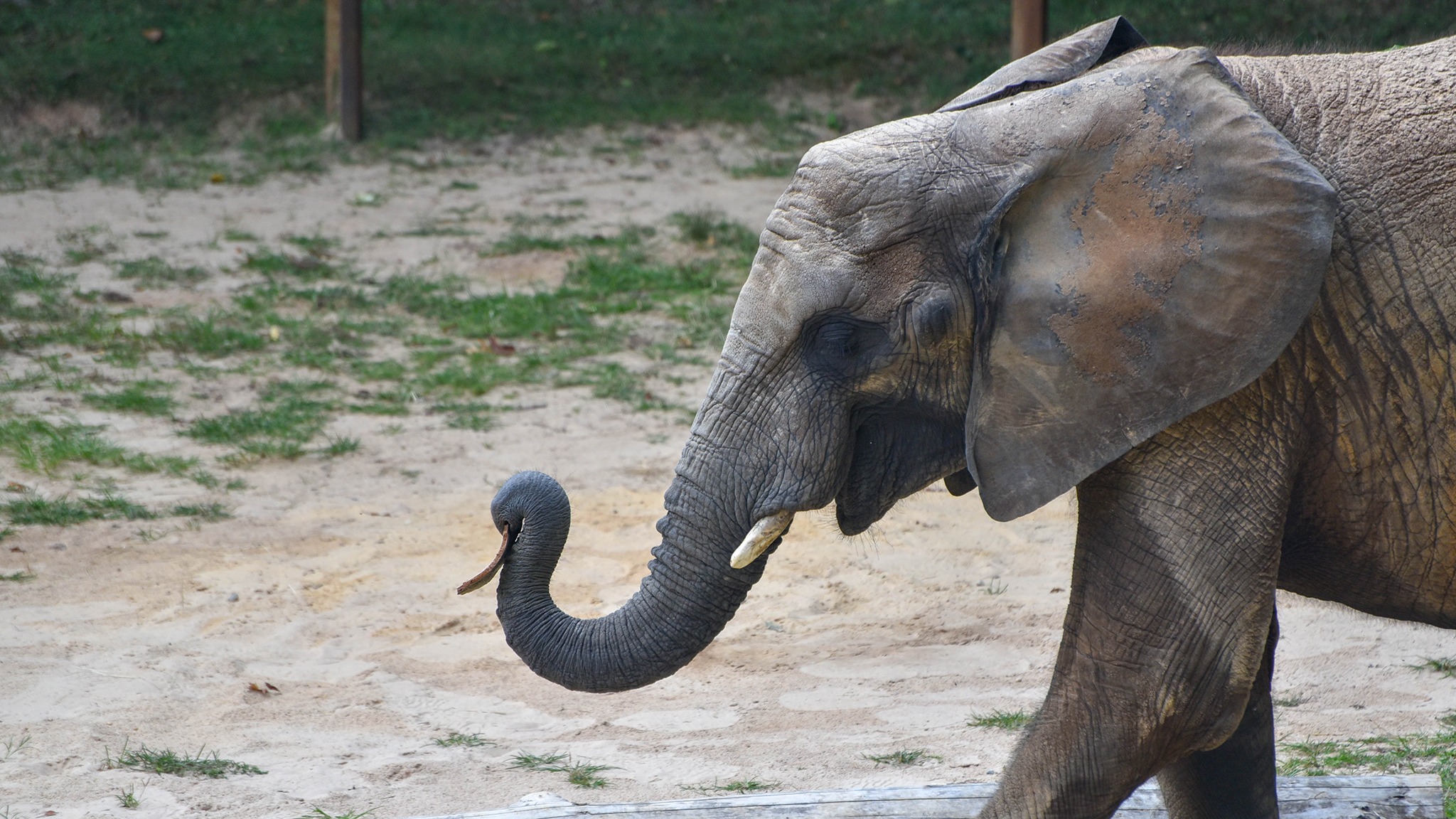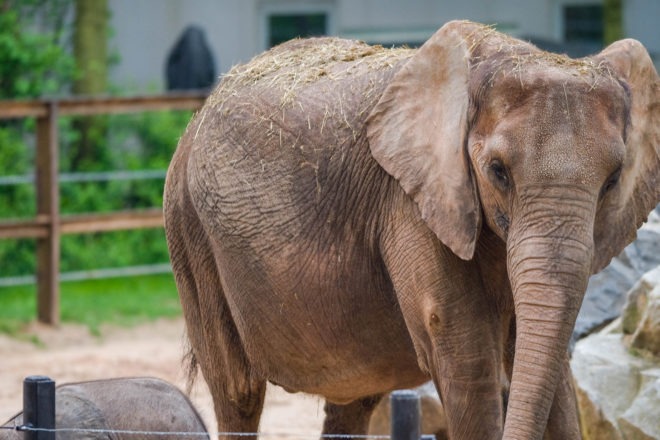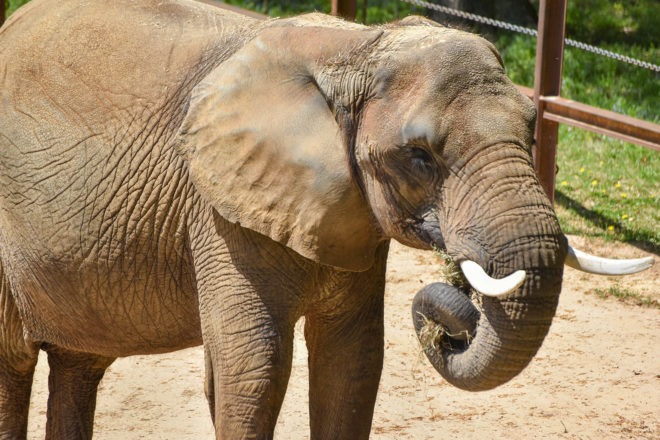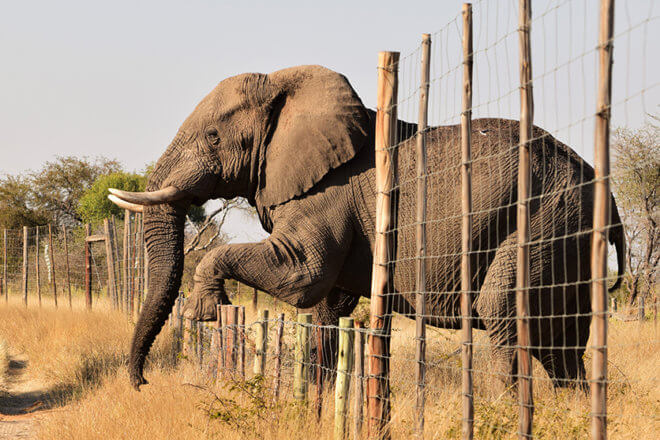Securing a Future for African Elephants
The Maryland Zoo has a long history of caring for African elephants, and we are strongly committed to their survival in the wild. African elephants are threatened by poaching for their ivory tusks, as well as loss of their habitat and conflict with humans in many areas of their range.
Conservation starts with caring for the animals who live at the Zoo and inspiring others to care about these beautiful animals. But it goes much further than that. For African elephants, it requires collaboration on many fronts through scientific studies, support for conservationists on the ground in Africa, and advocacy right here in Maryland for practices that discourage poaching.
Fighting the Ivory Trade
The desire for ivory is the greatest threat to African elephants. Ivory is tooth tissue from an elephant’s upper incisors, which are equivalent to our front teeth. Valued for millennia, ivory has been used in sculptures, jewelry, and musical instruments. Although substitute materials exist that replicate the texture, color, and strength of ivory, rareness and prestige drive ivory demand in the twenty-first century. The only way for poachers to obtain ivory is to kill the elephant and remove its tusks. On average, poachers kill 96 elephants each day–that equals tens of thousands of elephants each year. Although US federal laws were enacted in 2016 to ban the import of ivory, the United States remains one of the world’s major importers of illegal ivory.
The Maryland Zoo actively supported legislation to enact state and federal laws to ban the importation, sale and purchase of ivory. You can help by being aware of products that might contain ivory and avoid purchasing them. In particular, be conscious of the materials in items at antique stores, flea markets, antique and jewelry shows, auctions, and consignment shops.
Working with Partners
The Maryland Zoo supports the work of several partners dedicated to the conservation of elephants in their native range. Since 2008, the Zoo has provided support to the International Elephant Foundation (IEF). IEF is committed to creating a sustainable future for elephants by generating and effectively investing resources to support elephant conservation, education, scientific studies, and management programs worldwide.
The Zoo also works closely with our Botswana-based partner Elephants for Africa. The Elephants for Africa team of field researchers focuses on understanding and protecting bull elephants and on developing means for local people to live safely and peacefully near elephants. Compared to elephant herds, which are dominated by females, bull elephants have received relatively little scientific attention. Yet bull elephants in Botswana and elsewhere are involved in much of the conflict with local communities. Elephants for Africa is working to fill gaps in understanding about the social needs and movements of male elephants, particularly as poaching has removed many of the older bulls who were carriers of important social and ecological knowledge. The Zoo supports Elephants for Africa in this important work through funding, information sharing, and scientific collaboration.
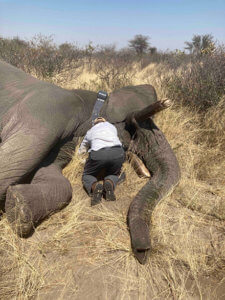
Most recently, the Maryland Zoo has joined in support of a 3-year project with Elephants for Africa to track male African savanna elephants through Botswana’s Makgadikgadi Pans National Park. The Elephants for Africa research team has attached satellite tracking collars to 10 bull elephants to monitor their movements throughout the region. Understanding how male elephants navigate the landscape can help conservationists and officials predict where conflicts with local communities might arise. The tracking data can also help researchers understand what specific resource needs–such as particular soil minerals–might be driving the elephants’ movements. As climate changes shift the availability of resources for elephants, and as human land use continues to expand, studies like this one are becoming increasingly important.
Advancing Science
Understanding elephant biology and behavior is critical for guiding conservation efforts. The Zoo has actively collaborated on a number of African elephant scientific studies that directly relate to improving the lives of elephants in human care as well as protecting elephants in their native range. These projects range from investigating viral diseases to studying reproductive hormones.
The Zoo participated in a recent study led by researchers at George Mason University to examine how effective it can be to use nail clippings, body hair, or tail hair to monitor an elephant’s reproductive patterns and even well-being. Wildlife researchers more commonly monitor an animal’s reproductive and stress hormones from urine and feces, but the use of hair and nail clippings is growing. Hair and nails are easier to transport, and they can be stored for long periods of time. Studies like this one are a great example of how animals in zoos contribute to innovations in conservation research.
